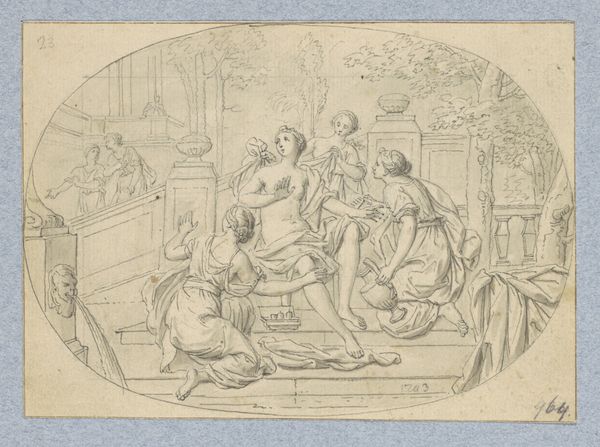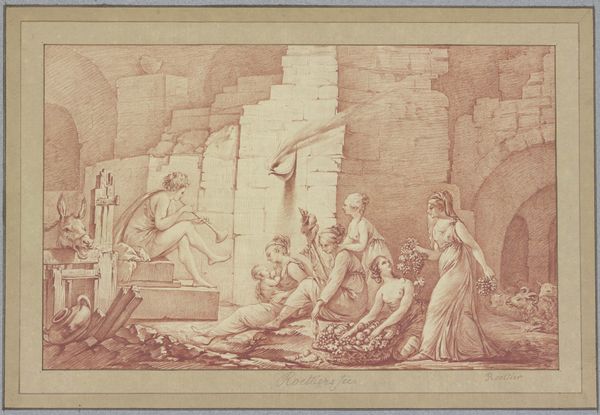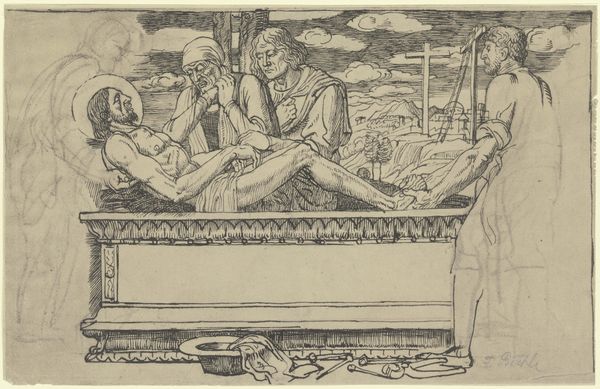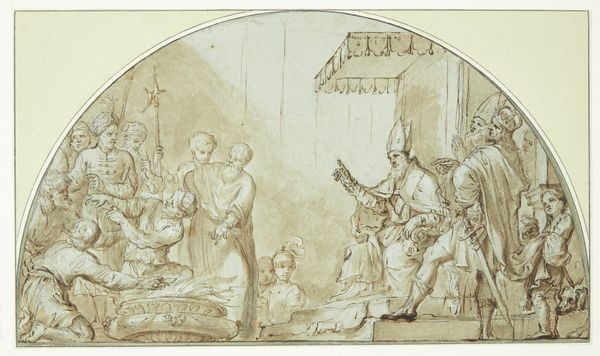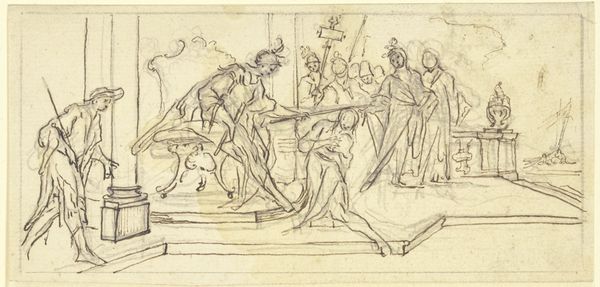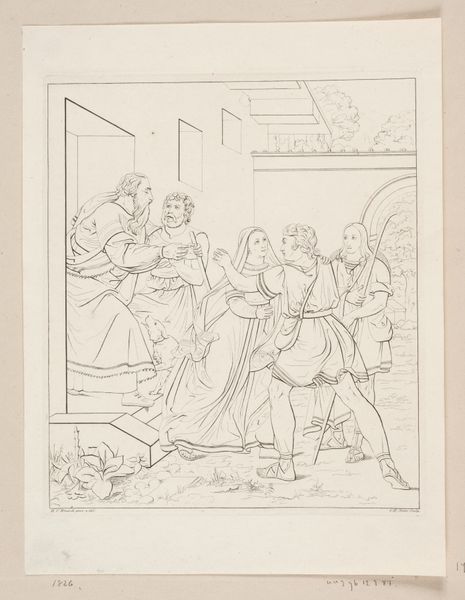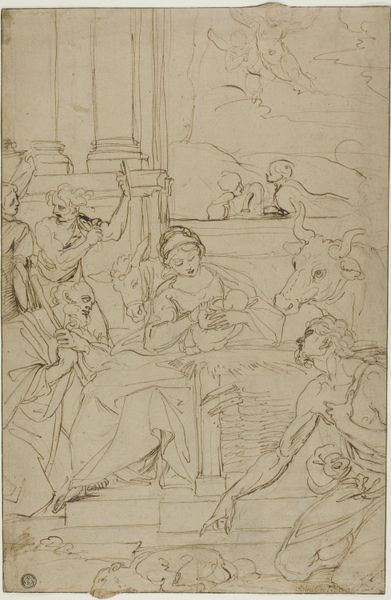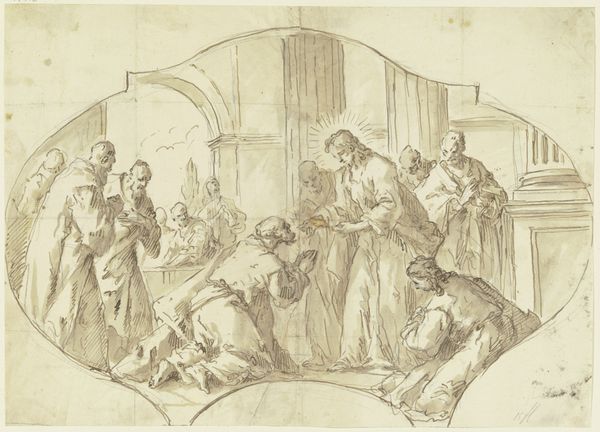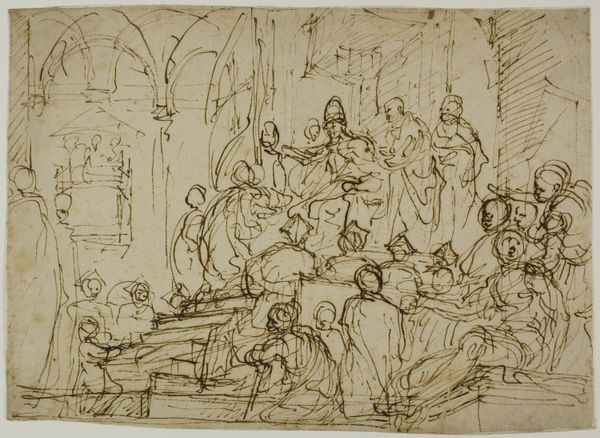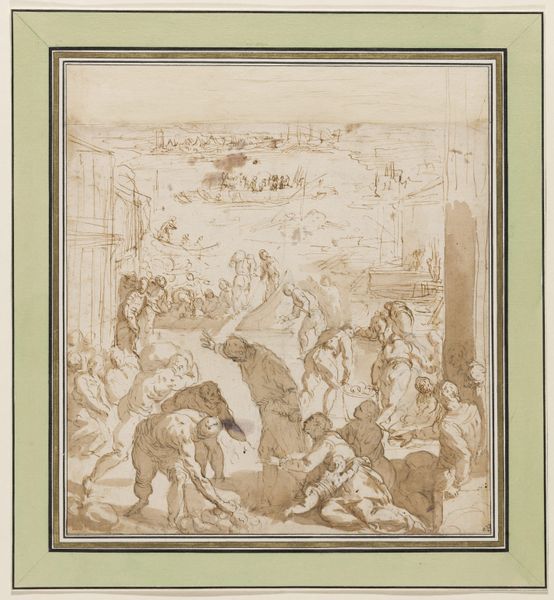
Drinking and Dancing Before the Tribal Chief Qing dynasty (644–1911), late 17th to early 18th century
0:00
0:00
drawing, paper, ink
#
portrait
#
drawing
#
asian-art
#
paper
#
vessel
#
ink
#
coloured pencil
#
genre-painting
#
miniature
#
calligraphy
Dimensions: 35.7 × 99.8 cm
Copyright: Public Domain
Curator: Looking at this drawing by Leng Mei, dating back to the late 17th or early 18th century during the Qing dynasty, called "Drinking and Dancing Before the Tribal Chief," I’m immediately drawn to its intricate detail, rendered with ink and color on paper. It's quite an insight into the leisure activities of the period. What strikes you most about this scene? Editor: It feels…quietly opulent, doesn't it? Despite the implied "drinking and dancing," there's a subdued quality, almost dreamlike. The color palette is restrained, the lines delicate. It's as if we’re eavesdropping on a private, privileged moment. The material simplicity underscores that. I mean, ink and paper, traditionally humble materials, elevate this intimate portrayal. Curator: Precisely! The choice of materials and the miniature format allow for remarkable detail, capturing the textures of the clothing, the patterns on the cushions, and the various vessels depicted. The production of such an artwork likely involved meticulous labor and skill, reflective of the patronage system prevalent then. It also seems interesting how you used that “dreamlike” quality in the way you speak of that opulence, considering its distance to reality. Editor: Absolutely, labor is an excellent observation. It does beg the question, what does luxury and leisure mean and whose labor allows the creation and experience of art? But I do notice, this reminds me a bit of a stage setting, all very arranged, each person almost frozen in place within their tiny scene, like figurines. The composition subtly underscores a structured hierarchy, doesn't it? Curator: Yes, definitely! And that links back to your earlier comment about privilege. Each element—the meticulously rendered garments, the vessels being offered, the act of subservience visible on the right of the drawing, and the raised platform on which they sit – contributes to the narrative of social standing and power dynamics at play in Qing society, with subtle notes to colonial hierarchy. Editor: Thinking about this piece, there's an enduring charm in this miniature glimpse into a long-vanished world. The artist captures something universal. Curator: I agree, contemplating it with you allows a renewed appreciation for its meticulous execution and rich cultural context.
Comments
No comments
Be the first to comment and join the conversation on the ultimate creative platform.
